Converting existing VMware virtual machines to Microsoft Hyper-V is very easy using the Microsoft Virtual Machine Converter (MVMC) 2.0. This is a free utility available for download here.
MVMC 2.0 provides you with the option to convert and migrate your VMware virtual machines to your on premise Hyper-V servers or to deploy that converted virtual machine in Microsoft Azure. We will cover converting your VMware virtual machine and migrating it to Microsoft Azure in the upcoming part 2 of this post.
Prerequisites
-
Existing ESX, ESXi or vCenter hosts with VMware virtual machines
-
MVMC 2.0
-
Stand alone Hyper-V server with locally attached storage with 2 shared folders
-
Existing Azure Subscription (Part 2)
VMware to Hyper-V Conversion Environment
There are a few approaches to the VMware conversion environment. I have a Hyper-V host “conversion server” that consists of a stand-alone Hyper-V host with local storage that has the MVMC application installed. The conversion server is the target Hyper-V host for our VMware converted virtual machine. I have also created 2 shared folders that are used during the conversion process.
Create 2 folders on the Hyper-V conversion server
VM Converted – This directory will store the virtual disk
VM Converter – This directory will be used to “convert” the VMware disk
The figure below shows our existing VMware ESX host and our Target Hyper-V environment.
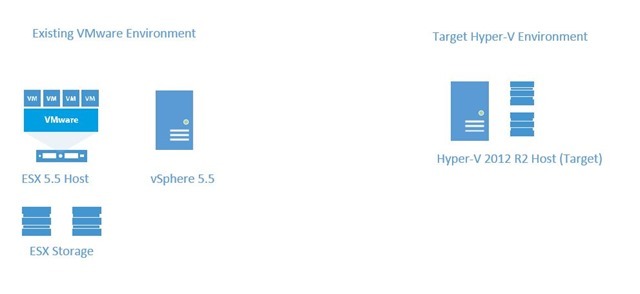
Converting VMware Virtual Machines
Launch MVMC > Click Next
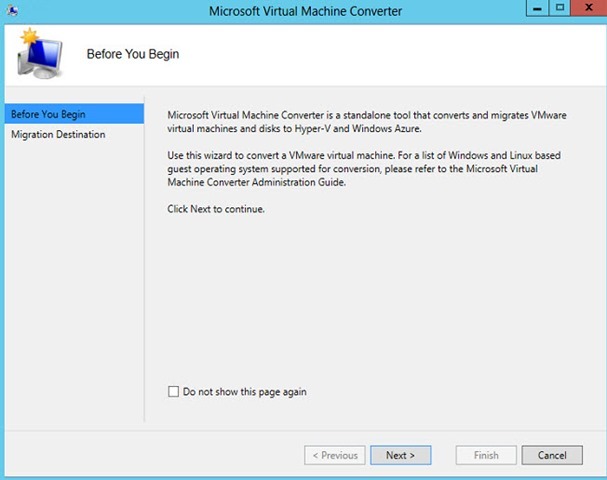
There are many new and enhanced features in MVMC 2.0. The first that we see is the option to migrate the existing VMware virtual machine to Hyper-V or convert the VM and migrate it to Azure. In Part 2 of this blog we'll go through the steps to migrate virtual machines to Azure.

We will be selecting the Migrate to Hyper-V > Click Next
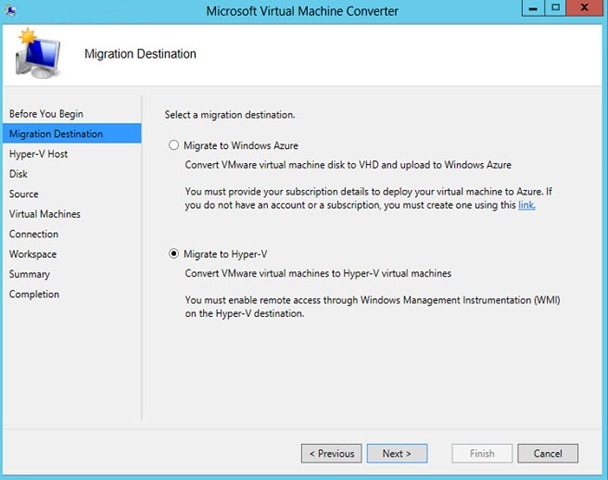
Enter the IP or FQDN of the target Hyper-V host,(I will be using my domain credentials for access permissions)this will be the destination of the migrated VMware virtual machine. > Click Next
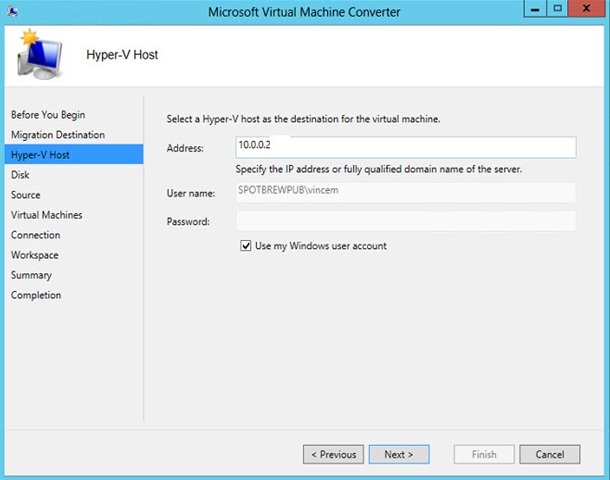
Set the UNC path to our Hyper-V Conversion server to store the converted virtual hard disk. For this migration we will accept the default settings > Click Next
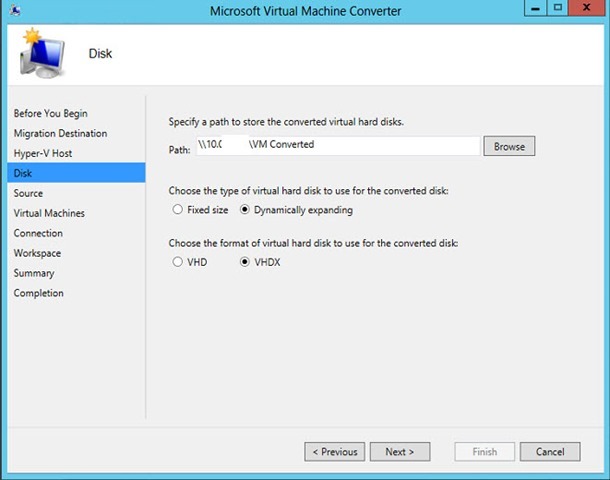
Enter the IP address of the vCenter, ESX or ESXi server, then enter User name and Password credentials for the VMware server > Click Next
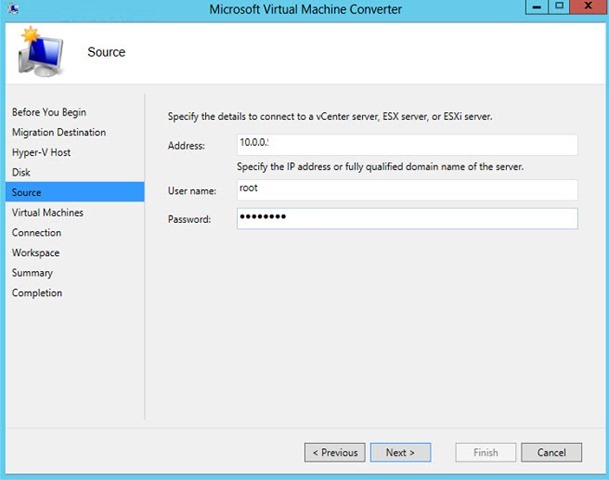
A list of VMware virtual machines will appear in a pick list. Select the virtual machine that you want to convert > Click Next
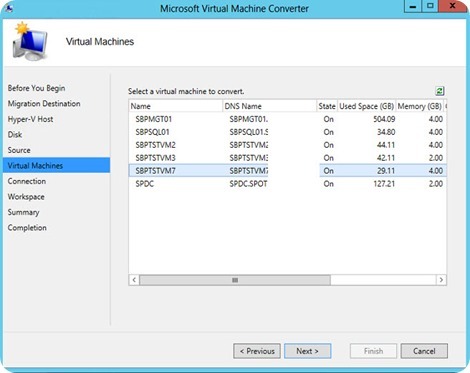
This dialog box verifies the name of the virtual machine that was selected, User name and password for the account that will be used to migrated the virtual machine and the Final state of the source and destination virtual machine. I chose to Select Final State “On” for the migrated virtual machine. > Click Next
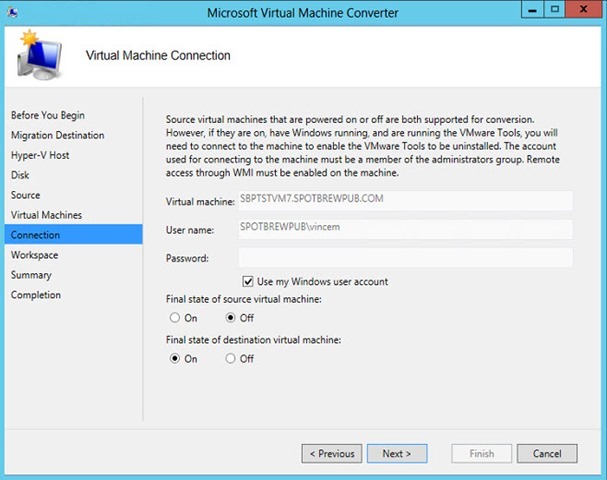
Select the directory where the virtual machine disk will be converted > Click Next > Click Finish
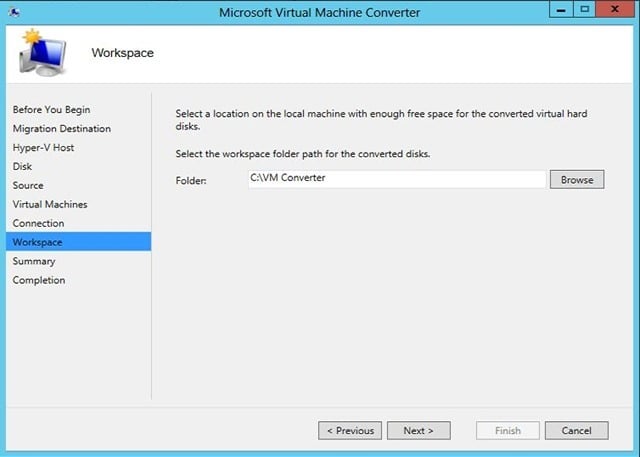
The MVMC conversion process creates a snapshot of the VMware virtual machine, uninstalls the VMware tools and then converts the VMware disk.
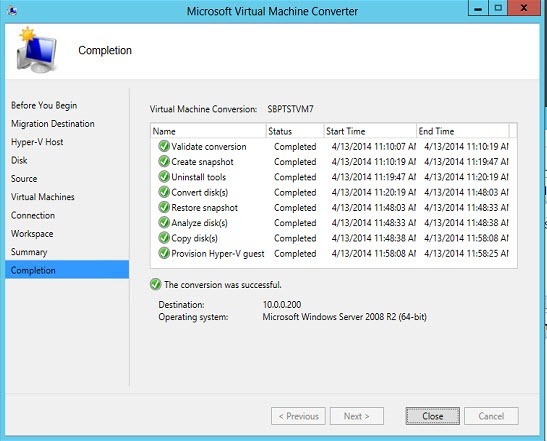
When the VMware virtual machine is converted the converted VMware virtual machine is residing and running on the Hyper-V target host server.
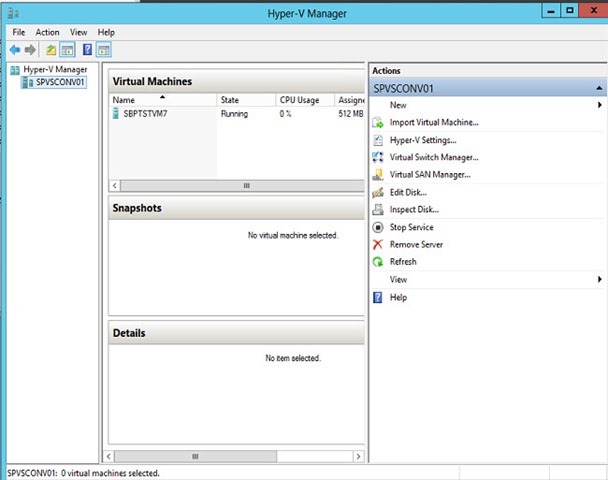
Post Migration Tasks
In Hyper-V Manager Right Click the virtual machine > Click Settings
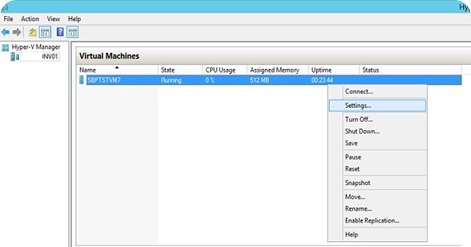
View the Management Settings for the converted virtual machine. Verify if all of the hardware settings provide adequate resources for the service running on the converted virtual machine.
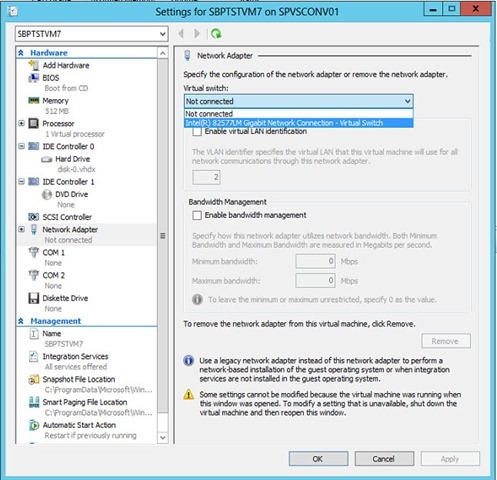
You will notice that all of the Hyper-V Integration Services are installed. However all of the Hyper-V Management options should be reviewed to ensure that the location of the Hyper-V Snapshots and Automatic Start and Stop Actions meet your current standards.
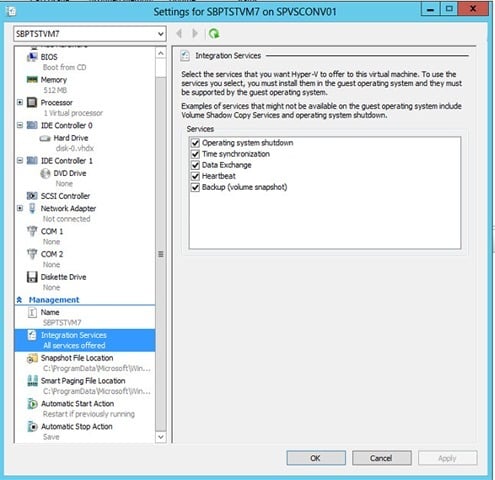
The converted virtual machine is on the domain and ready to use
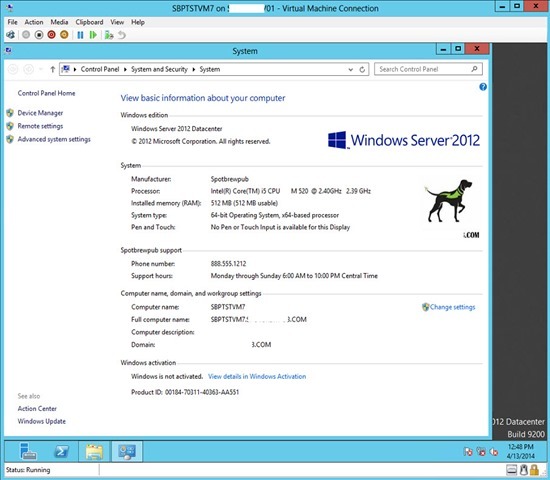
Stay tuned for the upcoming part 2 of this blog where we'll cover the prerequisites and go through the steps to migrate virtual machines to Azure.
Information and material in our blog posts are provided "as is" with no warranties either expressed or implied. Each post is an individual expression of our Sparkies. Should you identify any such content that is harmful, malicious, sensitive or unnecessary, please contact marketing@sparkhound.com
Share this
You May Also Like
These Related Stories
-1.png)
Migrating VMware to Microsoft Azure with MVMC 2.0 Part 2
-2%EF%B9%96width=1920&height=1080&name=Syntex%20Background%20(2)-2.png)
Unlocking the Power of Business Documents: How Microsoft Syntex is Revolutionizing Data Management with Content AI
